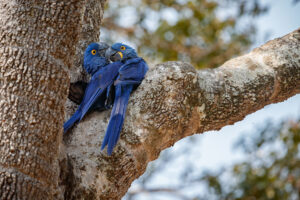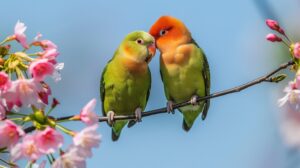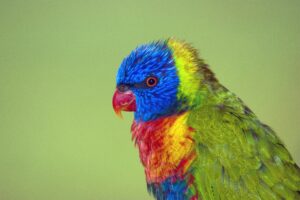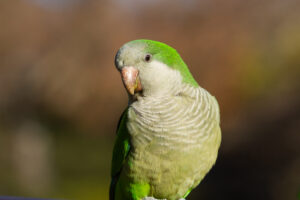Introduction
The pineapple conure has quickly become one of the most sought-after companion birds among avian enthusiasts in the United States. With their vibrant yellow and orange plumage that resembles a ripe pineapple, these charming birds bring color and personality to any home. As a mutation of the green cheek conure, the pineapple conure combines striking looks with a generally pleasant temperament, making them increasingly popular pets.
However, owning a pineapple conure comes with significant responsibilities. These intelligent, social creatures require specific care to thrive in a domestic environment. Unfortunately, many new owners make critical mistakes that can negatively impact their bird’s health, happiness, and behavior. Whether you’re considering bringing a pineapple conure into your home or already share your life with one of these feathered companions, understanding and avoiding these common pitfalls is essential.
In this comprehensive guide, we’ll explore the four most critical mistakes pineapple conure owners make and provide detailed advice on how to avoid them. By understanding proper pineapple conure care, diet, housing, and social needs, you’ll be better equipped to provide your colorful companion with the best possible life.

Understanding the Pineapple Conure
Before diving into common mistakes, let’s understand what makes the pineapple conure such a special pet.
The pineapple conure is a color mutation of the green cheek conure (Pyrrhura molinae), featuring distinctive yellow and orange coloration on their chest and a cinnamon-colored head. Despite their unique appearance, pineapple conures share the same care requirements, personality traits, and behavioral characteristics as standard green cheek conures.
Key Facts About Pineapple Conures:
- Lifespan: The average pineapple conure lifespan ranges from 20-25 years with proper care
- Size: Small-to-medium sized parrots, typically 9-10 inches in length
- Weight: Usually between 60-80 grams
- Noise Level: Moderate compared to larger parrots, though pineapple conure noise level can increase when excited
- Talking Ability: While pineapple conure talking isn’t as advanced as larger parrots, they can learn a small vocabulary of words and phrases
- Temperament: Generally playful, affectionate, and curious with a pineapple conure personality that’s social and engaging
The pineapple conure price typically ranges from $250 to $500, depending on breeding, age, and location. This initial cost represents only a small fraction of the lifetime investment required for proper pineapple conure care.
Critical Mistake #1: Inadequate Housing and Cage Setup
Perhaps the most fundamental mistake new pineapple conure owners make is providing inappropriate housing. Your bird’s cage is more than just a place to sleep—it’s their primary territory and needs to accommodate their natural behaviors.
The Wrong Cage Size
Despite their relatively small size, pineapple conures are active birds that need space to move, climb, and play. Many owners mistakenly purchase cages that are too small, leading to stress, boredom, and potentially destructive behaviors.
Proper Pineapple Conure Cage Setup Requirements:
- Minimum Cage Size: 24″ W × 24″ D × 30″ H (larger is always better)
- Bar Spacing: 1/2″ to 3/4″ (prevents escape while allowing climbing)
- Shape: Wider rather than taller, providing more usable space
- Material: Powder-coated or stainless steel (avoid galvanized, zinc-coated, or painted cages)
“When I first got my pineapple conure, I thought a small cage would be fine since they’re small birds,” says avian specialist Dr. Maria Rodriguez. “But these active little parrots need space to exercise their wings, climb, and play with toys. A cramped cage can lead to health issues and behavior problems.”
Poor Cage Placement
Another aspect of improper pineapple conure cage setup involves placement. Many owners position cages in locations that are either too isolated or too exposed.
Avoid placing your pineapple conure’s cage:
- In direct sunlight (overheating risk)
- Near drafty windows or doors
- In or near the kitchen (toxic fumes from non-stick cookware)
- In areas with cigarette smoke or other air pollutants
- In isolated rooms where the bird spends most time alone
- Too close to air conditioning or heating vents
Ideal placement includes:
- In a family room or living area where the bird can observe household activity
- Against a wall (providing security)
- Away from direct sunlight but in a naturally well-lit area
- In a room with stable temperature (65-80°F)
Insufficient Cage Furnishings
A bare cage with just food and water dishes is inadequate for an intelligent bird like a pineapple conure. These birds need environmental enrichment to prevent boredom and promote physical and mental health.
Essential cage furnishings include:
- Multiple perches of varying materials and diameters
- Natural, untreated wood branches (apple, willow, dogwood)
- Rope perches (cotton, not frayed)
- Concrete perches (for nail maintenance)
- Different diameters (1/2″ to 1″) to exercise feet and prevent arthritis
- Variety of toys rotated regularly
- Foraging toys that hide treats
- Chewable toys for beak maintenance
- Puzzle toys for mental stimulation
- Shredding toys to satisfy natural behaviors
- Proper food and water stations
- Multiple locations
- Easily accessible but not directly under perches
- Heavy enough to prevent tipping
- Sleeping area
- A small tent or covered corner for security
- Avoid fabric snag risks
“The pineapple conure size may be small, but their need for mental stimulation is enormous,” explains avian behaviorist Thomas Chen. “A properly furnished cage can prevent many behavior problems that stem from boredom and frustration.”
Critical Mistake #2: Improper Diet and Nutrition
Perhaps no aspect of pineapple conure care is more frequently mishandled than diet. Many owners rely too heavily on seed-based diets, which can lead to serious nutritional deficiencies and health problems.
Seed-Only Diets
One of the most dangerous misconceptions is that parrots, including pineapple conures, can thrive on seeds alone. Seeds are high in fat and deficient in many essential vitamins and minerals, particularly calcium and vitamin A.
“I see too many pineapple conures suffering from malnutrition despite having plenty of food,” says avian veterinarian Dr. Sarah Johnson. “Seeds should make up no more than 10% of a conure’s diet.”

Proper Pineapple Conure Diet Components:
- High-Quality Pellets (60-70% of diet)
- Formulated specifically for small parrots
- Free from artificial colors and preservatives
- Provides balanced nutrition
- Fresh Vegetables (20-30% of diet)
- Dark leafy greens (kale, spinach, collard greens)
- Colorful vegetables (bell peppers, carrots, sweet potatoes)
- Cruciferous vegetables (broccoli, cauliflower)
- Limited Fresh Fruits (10% of diet)
- Berries, apples, pears, papaya
- Avoid avocado (toxic to birds)
- Limit high-sugar fruits
- Small Amount of Seeds and Nuts (5-10% of diet)
- Use as treats or training rewards
- Focus on healthier options like flax seeds
- Limit sunflower and peanuts due to high fat content
- Occasional Protein Sources
- Well-cooked egg
- Small amounts of plain cooked chicken
- Legumes (cooked beans, lentils)
The Pineapple Conure Food List: Safe and Unsafe Foods
Safe Foods for Pineapple Conures:
- Apples (no seeds)
- Bananas
- Berries (strawberries, blueberries)
- Broccoli
- Carrots
- Bell peppers
- Leafy greens
- Papaya
- Mango
- Quinoa
- Brown rice
- Sweet potatoes
- Pumpkin
- Squash
- Cooked beans
Foods to Avoid:
- Avocado (toxic)
- Chocolate (toxic)
- Caffeine (toxic)
- Alcohol (toxic)
- Onions and garlic
- Salty foods
- Mushrooms
- High-fat processed foods
- Sugary treats
Improper Food Preparation and Presentation
Even with the right foods, preparation matters. Many owners don’t properly wash produce (risking pesticide exposure) or present food in ways that encourage consumption.
For successful diet conversion and maintenance:
- Wash all produce thoroughly
- Cut foods into appropriately sized pieces
- Serve food fresh and at room temperature
- Remove uneaten fresh foods within 2-4 hours
- Present new foods repeatedly (may take 10-15 introductions)
- Try different presentations (hanging, chopped, in toys)
“The pineapple conure diet is crucial to their health and longevity,” says avian nutritionist Andrea Lopez. “What’s remarkable is how diet affects not just physical health but also behavior, feather condition, and even their activity levels. A well-fed pineapple-conure is typically more active, vibrant, and exhibits fewer behavioral problems.”
Critical Mistake #3: Lack of Socialization and Mental Stimulation
One of the most heartbreaking mistakes pineapple-conure owners make is failing to meet their birds’ social and intellectual needs. As highly social creatures, pineapple-conures form strong bonds with their human flock and require regular interaction, training, and mental challenges.
Insufficient Social Interaction
Pineapple-conures are not decorative pets meant to be admired from afar. They require daily social interaction to maintain their psychological health.
“Pineapple-conure behavior problems often stem from isolation,” explains avian behavior consultant Emma Williams. “These birds evolved to live in flocks, and in captivity, you become their flock. Without adequate social time, they can develop screaming habits, feather plucking, and even self-mutilation.”
Social requirements for pineapple-conures:
- Minimum 2-3 hours of out-of-cage time daily
- Direct interaction with family members
- Consistent daily routine
- Inclusion in family activities when possible
Missing Training Opportunities
Many owners don’t realize that pineapple conure training is not just about teaching tricks—it’s essential mental stimulation that strengthens your bond and provides crucial behavioral guidance.
Basic training that every pineapple conure should receive:
- Step-up (coming onto your hand on command)
- Step-down (moving from your hand to another perch)
- Recall training (coming when called)
- Crate/cage training (entering their cage willingly)
- Simple tricks (turn around, wave, etc.)
“Regular pineapple conure training sessions, even just 5-10 minutes several times daily, can dramatically improve your bird’s behavior and strengthen your bond,” says professional bird trainer Michael Green. “They’re surprisingly quick learners and enjoy the mental challenge.”
Lack of Environmental Enrichment
Many owners underestimate how intelligent these birds are and fail to provide adequate mental stimulation beyond basic cage toys.
Enrichment ideas for pineapple conures:
- Foraging opportunities (hiding treats in toys or paper cups)
- Puzzle toys that require problem-solving
- Rotating toy collection (new toys every few days)
- Varied perches and play gyms
- Safe household items to explore (cardboard boxes, paper bags)
- Different textures and materials to interact with
- Natural materials for shredding and chewing
“Are pineapple conures good pets? Absolutely, but only if you’re willing to engage their minds,” says exotic pet specialist Dr. Robert Chen. “These birds have the intelligence of a 3-4 year old child and need appropriate mental challenges to prevent boredom and frustration.”
Addressing Taming Challenges
For new owners wondering how to tame a pineapple conure, rushing the process is a common mistake. Building trust takes time and patience.
The taming process:
- Start by simply sitting near the cage, talking softly
- Gradually introduce your hand near (not in) the cage
- Offer favorite treats from your fingers
- Progress to brief, positive handling sessions
- Respect body language indicating discomfort
- Never force interaction
- Maintain consistency
- Build positive associations through treats and praise
“The pineapple conure temperament is generally friendly and adaptable,” notes avian behavior specialist Dr. Lisa Rodriguez, “but each bird is an individual. Some may take days to warm up, others months. The key is patience and positive reinforcement.”
Critical Mistake #4: Neglecting Health and Environmental Needs
The final critical mistake many pineapple conure owners make involves overlooking essential health and environmental requirements. These birds have specific needs regarding veterinary care, air quality, temperature, hygiene, and safety that must be met for them to thrive.
Skipping Regular Veterinary Care
Many owners wait until their bird shows obvious illness before seeking veterinary care, which can be too late for these masters of hiding symptoms.
Proper veterinary care includes:
- Initial exam when acquiring your pineapple conure
- Annual wellness exams
- Baseline blood work to establish normal values
- Weight monitoring
- Nail, wing, and beak trims as needed
- Immediate attention for any behavioral changes
“Birds, including pineapple conures, are experts at hiding illness until they’re critically sick,” warns avian veterinarian Dr. James Wilson. “By the time a bird shows obvious symptoms, the condition is often advanced. Regular checkups can catch issues early when they’re more treatable.”
Poor Air Quality and Environmental Hazards
The pineapple conure respiratory system is highly sensitive to airborne toxins and pollutants. Many common household items pose serious health risks.
Household dangers to avoid:
- Non-stick cookware when heated (releases toxic fumes)
- Scented candles, air fresheners, and essential oils
- Household cleaners and aerosols
- Cigarette smoke and vaping products
- Carbon monoxide from poorly maintained appliances
- Lead found in older toys, jewelry, or paint
- Zinc found in galvanized metal
- Pesticides and insecticides
“I treated a pineapple conure with severe respiratory distress because the owners used scented candles and didn’t realize birds are so sensitive to airborne particles,” recounts emergency avian specialist Dr. Melissa Thompson. “Their respiratory systems are much more efficient than ours, which makes them more vulnerable to toxins.”
Inadequate Bathing Opportunities
Proper pineapple conure bathing is essential for feather condition, respiratory health, and natural behavior expression, yet many owners provide insufficient bathing options.
Bathing options for pineapple conures:
- Shallow dish of water
- Gentle misting with room-temperature water
- Commercial bird bath products
- Wet lettuce leaves to roll in
- Supervised shower perch (lukewarm water, gentle spray)
“In the wild, conures bathe regularly in rain and morning dew,” explains avian specialist Jennifer Adams. “Domestic pineapple conures still need regular bathing for proper feather maintenance, which affects their insulation, waterproofing, and flight capabilities.”

Misunderstanding Gender Differences
While not immediately obvious, there are subtle differences between male vs female pineapple conure behavior and care requirements.
Gender differences to consider:
- Females may need additional calcium during breeding seasons
- Females might display nesting behaviors
- Some owners report subtle personality differences, though individual variation exists
- Both genders can be equally affectionate and trainable
“The truth is, when it comes to being a pet, individual personality matters far more than gender in pineapple conures,” says breeder Alexander Martinez. “I’ve had shy males and bold females, talkative females and quiet males. Choose the bird that connects with you rather than focusing on gender.”
Finding a Pineapple Conure
For those considering adding a pineapple conure to their family, choosing a reputable source is critical to avoid health and behavioral problems.
Where to Find Pineapple Conures for Sale
Options for finding pineapple conures:
- Reputable breeders
- Visit their facility if possible
- Ask about socialization practices
- Request health guarantees
- Expect detailed questions about your home and experience
- Rescue organizations
- Many conures need rehoming
- Staff can match birds to appropriate homes
- Birds often come with known behavioral and health profiles
- May offer post-adoption support
- Specialty bird shops
- Evaluate cleanliness and bird conditions
- Ask about their sources
- Inquire about return policies
- Avoid shops that don’t allow handling before purchase
“Always avoid buying birds from classified ads or flea markets,” warns avian welfare advocate Maria Henderson. “These birds often come from poor conditions, may have health issues, and can be poorly socialized.”
What to Look for in a Healthy Pineapple Conure
Health indicators when selecting a pineapple conure:
- Bright, clear eyes
- Clean, well-preened feathers
- Active and alert behavior
- No discharge from nostrils or eyes
- Clean vent area
- Good weight (not too thin or heavy)
- Smooth beak and healthy feet
- Interest in surroundings
Conclusion: Creating a Thriving Environment for Your Pineapple Conure
The pineapple conure can be an extraordinary companion for those willing to meet their needs. By avoiding these four critical mistakes—inadequate housing, improper diet, insufficient socialization, and neglected health care—you’ll be well on your way to providing a loving, enriching home for these colorful companions.
Remember that owning a pineapple conure is a long-term commitment. With a pineapple conure lifespan of 20-25 years, you’re making a decision that will shape both your lives for decades to come. The investment in proper care, nutrition, housing, and time will reward you with a devoted, entertaining, and affectionate feathered friend.
For those wondering “are pineapple conures good pets?” the answer depends entirely on your willingness to provide the specialized care they require. When their physical, mental, and emotional needs are met, the pineapple conure can be an incredible addition to the right household.
Additional Resources for Pineapple Conure Owners
To further support your journey with these remarkable birds, consider exploring these valuable resources:
- Association of Avian Veterinarians – Find a qualified avian vet
- The World Parrot Trust – Conservation and education
- BirdTricks – Training resources
- Lafeber – Nutrition information
- Avian Avenue – Community forums
At PetsPump, we’re dedicated to providing comprehensive resources for all pet owners. Check out our other articles on proper bird nutrition, parrot training techniques, and setting up the perfect aviary.
Remember, the joy of sharing your life with a pineapple conure comes from the relationship you build together. By avoiding these common mistakes and committing to excellent care, you’ll create an environment where both you and your colorful companion can thrive for many years to come.






